In this article, we will be discussing the best way to grow your pileas. We will discuss what the best growing conditions are, what the best varieties to grow and what the pitfalls this plant can suffer from.
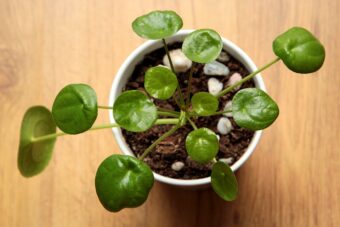
Pileas are very attractive plants that are grown for their leaves that are often interestingly marked and are textured. No matter what pilea you buy they tend to be easy to grow. Let us delve further into more about this wonderful houseplant.
WHAT ARE PILEAS?
Pilea is a large group of plants that has up to 715 species in the genus. The genus itself is the largest in the nettle family (Urticaceae). In nature, it is found throughout the tropics, subtropics and warm temperate regions, apart from Australia and New Zealand.
Most pileas are shrubs that are succulents and shade loving. Pilea takes its name from the Latin ‘Pileus’ meaning ‘Felt Cap’ because of the way the flower and seeds look.
As said earlier they have beautifully coloured leaves and are often different in form and texture. It has a major advantage as well as it is easy to look after and next, we will find how to do this.
HOW TO CARE FOR PILEAS
LIGHT
These plants do best in bright filtered light but the plant hates being in direct sunlight. This is because strong sunshine can burn the delicate succulent leaves.
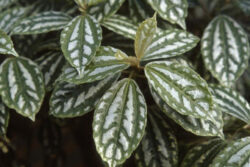
The plant tends to grow lopsided, so it is advised to rotate the plant at least 3 times a week, where one side will get more light than the others. In the shade, it will grow longer as it stretches to find a light source but the leaves will be dark green in shade.
TEMPERATURE
This is one plant that does not require warm temperatures, as long as it is greater than 10 degree Celsius. An ideal temperature range is 13 to 21 degree Celsius. Any excessive height near radiators may cause the plant to drop leaves.
HUMIDITY
This is one plant that does not require any misting, as it will do as well in dry, centrally heated homes.
WATERING

This is one plant that hates to be overwatered. It is better to let the compost dry a bit before you water again. When 5cm below the top of the surface of the compost feels dry when you stick your finger in. Only water enough until it just emerges from the drainage holes. If you see the leaves of the plant droop then you know it is time to water. In summer this may need to be done frequently, more sparingly in winter.
FERTILIZERS
If you want your pilea plants to look their healthiest then you will need to use a general houseplant fertiliser at the recommended manufacturer’s dosage all through the growing season.
GROWING MEDIA
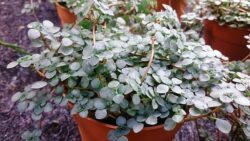
When you repot it is best to use a pot with drainage holes and a 2.5cm depth of horticultural grit at the bottom (as this will help with drainage). Use a good quality, well-draining houseplant compost. You can mix some perlite or horticultural grit to help increase drainage and to prevent root rot.
PESTS
Pileas can suffer from various pest attacks such as spider mites, mealybugs, fungus gnats, scales and thrips. It is best to deal with any infestation as soon as they are observed by the use of a suitable systemic insecticide.
VARIETIES TO GROW
P. CADIEREI (Aluminium Plant)
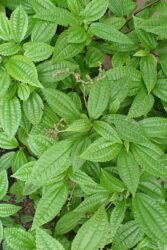
This is a neat, shrubby, 30cm tall plant with slightly puckered, spear-shaped leaves that are variegated light and dark green with a shiny metallic sheen. Old plants may become leggy and so it is advised to propagate from cuttings every other year, so that plant stock can be replenished. Prone to magnesium deficiency that causes the leaves to become pale and discoloured. Use Epsom salt to avoid this.
P. DEPRESSA (Creeping Jenny)
This is a perfect plant for hanging baskets or pots at elevation. It has small, rounded, succulent leaves held on trailing stems.
P. GLAUCOPHYLLA (Silver Leaf Artillery Plant)
This is a beautiful, colourful plant that has clusters of small, round, blue-green leaves that are borne on pink-red stems. A great plant to display in your home.
P. GRANDIFOLIA
This is a beautiful pilea that has bright green, glossy leaves that are heavily puckered. Compared to other Pileas the leaves tend to be bigger and bolder, making an instant impact.
P. INVOLUCRATA (Friendship Plant)
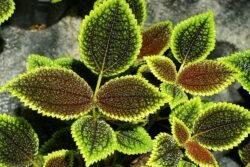
This has a similar habit to P. cadierei but the leaves are broadly oval, slightly hairy, bronze-green above and purplish below. It grows up to 30cm in height. A variety to grow is ‘Moon Valley’ that has serrated green leaves that are deeply veined and red underneath.
P. LIBANENSIS (Green Baby Tears)

This is another trailing houseplant that has very small, roundish leaves of silver-blue colour and red stems. Looks great cascading over the edge of a pot or in a hanging basket.
P. MICROPHYLLA (Artillery Plant)
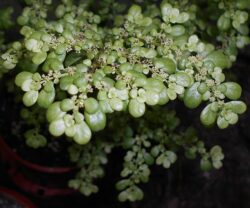
This is a neat bushy plant that has leaves similar to fern. In spring to autumn, light green flowers appear that emits clouds of smoke-like pollen when disturbed. Plants may deteriorate after 3 years, so take cuttings every couple of years or so to have replacements. This is one pilea that can take cooler temperatures.
P. MOLLIS (Moon Valley Plant)
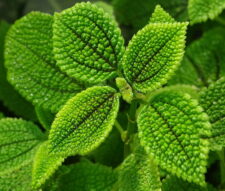
This is a neat and compact plant with golden-green leaves that are deeply inset veins that are colour contrasting chocolate brown, making it a lace-like pattern. This plant can be grown from seed.
P. NUMMULARIIFOLIA (Creeping Charlie)
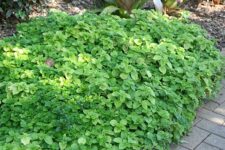
This is a dainty trailer with almost circular, small leaves with an undulating surface and reddish stems. A plant that cannot stand the cold.
P. PUBESCENS ‘Silver Child’
This is a beautiful pilea with its serrated oval leaves that are silvery-blue at the top and have a red hue on the bottom. All these leaves are borne on red stems. It is a compact variety, where it will grow tiny flowers.
P. PEPEROMIOIDES (Chinese Money Plant)
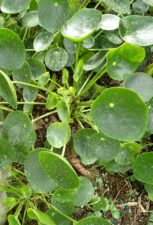
This is one of the most familiar of the piles because of its round, coin-shaped green leaves that grow on stalks above the pot. Not a difficult plant if you follow what is written in this article.
P. REPENS (Black Leaved Panamica)
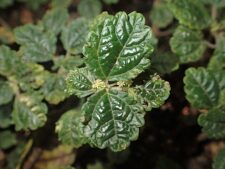
This is not a popular pilea but it is easy to grow from seeds. It is grown for it heavily, puckered, dark green, almost black leaves and that it produces attractive red flowers.
P. SERPYLLACEA (Pilea Globosa)
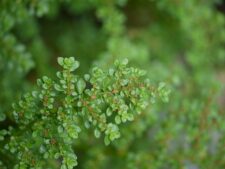
This is such an attractive, compact plant that has tiny red-green succulent leaves, which adds to its appeal in containers.
P. SPRUCEANA
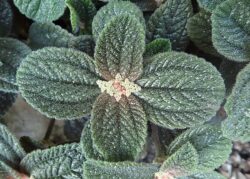
There is a number of varieties of this species but what they have in common is that they have attractive, silvery -green leaves. The leaves are larger than other species but it can be said to be some go the most colourful pilea, ‘Silver Tree’ had purple-brown leaves that is accentuated with a metallic silver stripe in the centre. ‘Norfolk’ has oval, bronze-red furrowed leaves with silver markings. They are really beautiful plants.
CONCLUSIONS
In this article, we have talked about how to get the best from your pilea, how to care for them, what pitfalls to avoid and what varieties to grow. As you can see there are so much that the plant offers; they are easy to look after and offers so much beauty.
A plant that you would be happy to have in your home and they are compact as well. Pilea plants are ideal for those who only have a small area to display their plants in.
If you have any comments or questions that you wish to cast so that your knowledge on pileas can be extended, then please do so in the comment box below,
Happy pilea growing.
